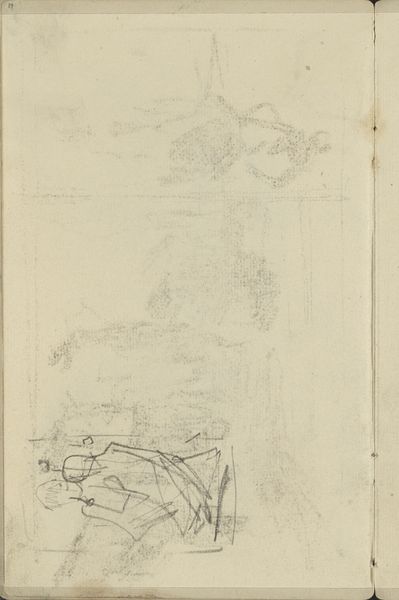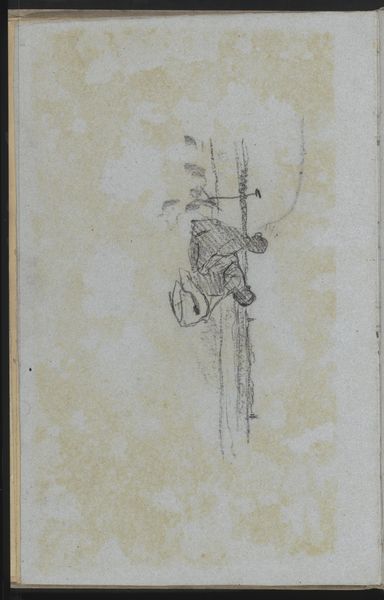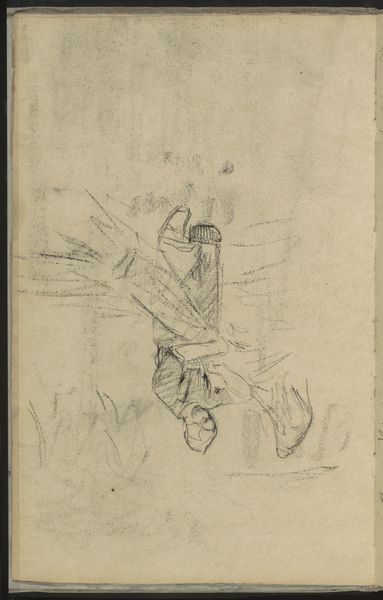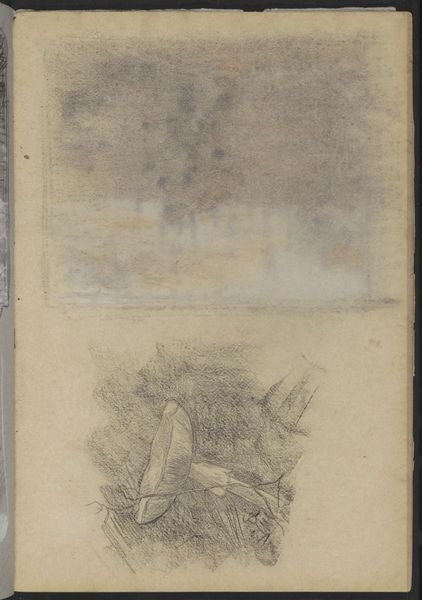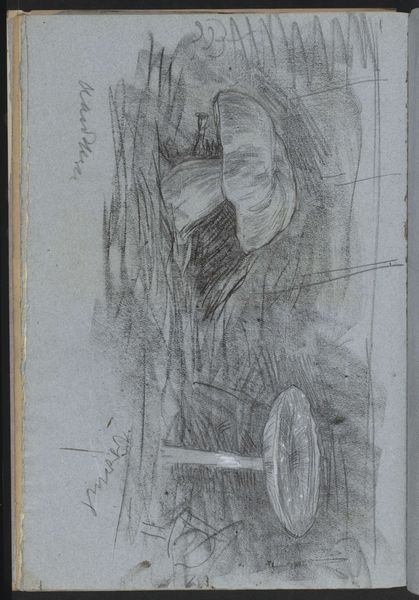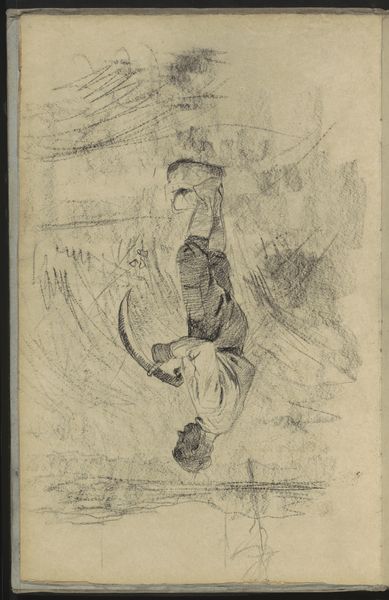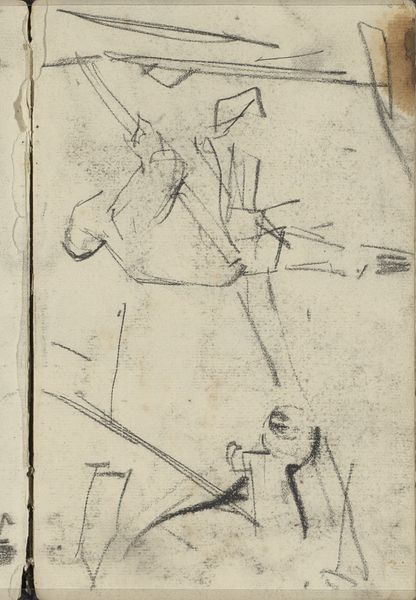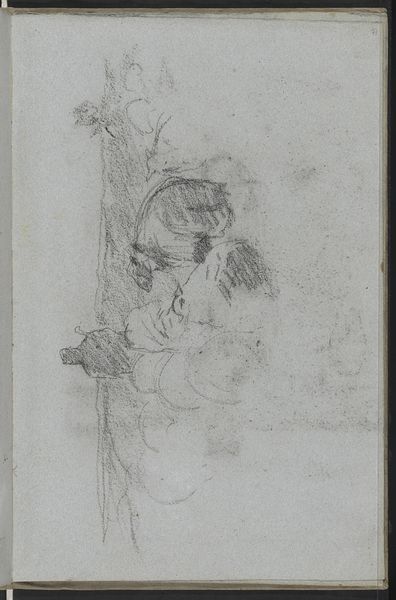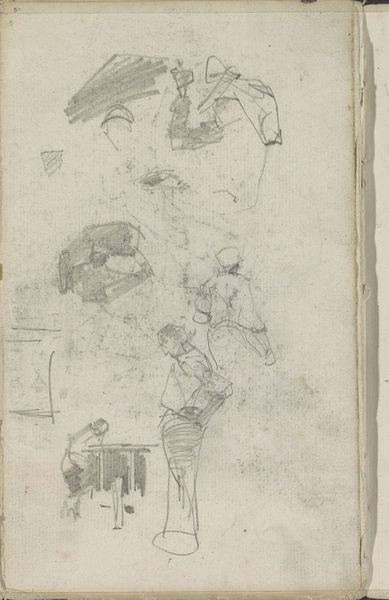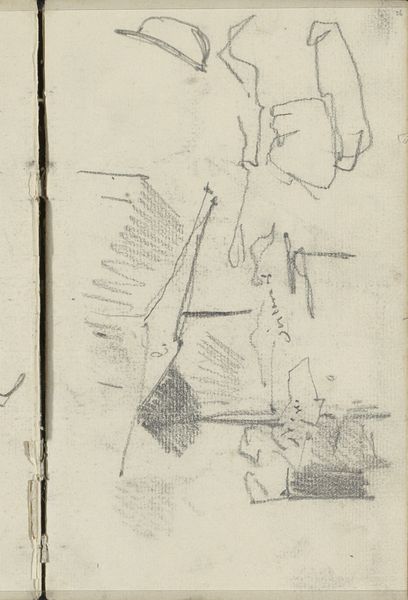
drawing, paper, pencil
#
drawing
#
dutch-golden-age
#
impressionism
#
landscape
#
paper
#
pencil
Copyright: Rijks Museum: Open Domain
Curator: Looking at this pencil drawing, “Boats in a Ditch,” dating from around 1884-1887 by Willem Witsen and held here at the Rijksmuseum, one gets a real sense of the artist’s focus on capturing fleeting moments in the Dutch landscape. Editor: Fleeting is right. It’s like catching a whisper of an image. The sketchiness, almost abstract in places, evokes a melancholic feeling. I imagine a still, grey day, maybe the end of summer. Curator: That melancholic feeling connects strongly to the artistic and social climate of the time, shaped by emerging industrialization. There’s a yearning in the artistic communities of that era to preserve something that may fade—or change so drastically as to be unrecognisable—rooted in very specific intersections of class and industry. The simplicity also highlights the beauty that’s in danger of vanishing. Editor: Exactly! And Witsen's rapid strokes, those broken lines… they almost vibrate on the paper, like the scene is still shimmering with life before settling into stillness. Did the man even stop moving his hand for a moment while making it? I see this kind of controlled frenzy as part of a broader search, a deeply psychological urge. Curator: Definitely. I'd also like to add that Witsen was part of a group of artists—often from privileged backgrounds, or certainly in elevated social circles, who saw themselves almost as custodians of an older, purer Netherlands. Their works are acts of preservation, really, and engage strongly with emerging national narratives about what the Netherlands should be. There are aspects of class preservation involved in who gets to decide which aspects of the culture should be 'saved', which of course becomes problematic when thinking about gender, and the place of women at the time, even in bourgeois environments such as his own. Editor: That tension between wanting to hold onto something and knowing you can't is all over this work. Even if, yes, he and the likes of him certainly had the economic and cultural capital that allowed him to decide about the need for something to be saved, it all resonates so profoundly in his work, his technique, that, well, his urge as an artist to represent the 'true' country cannot be disregarded out of hand, however suspicious one is about who these voices really stand for. Curator: Thinking about that tension in Witsen's landscape gives me more avenues for inquiry on identity and Dutch painting in general. It allows me to recontextualize what has become part of the art historical canon. Editor: Yeah, makes you want to go stare at more sketchy boats. See what other feelings those little drawings stir up.
Comments
No comments
Be the first to comment and join the conversation on the ultimate creative platform.
